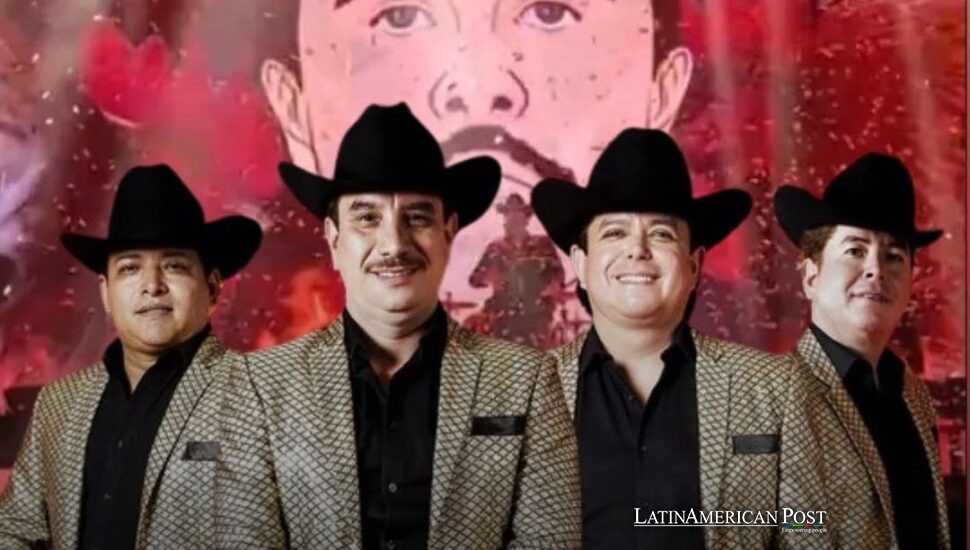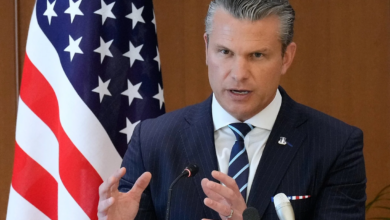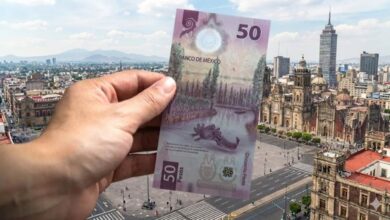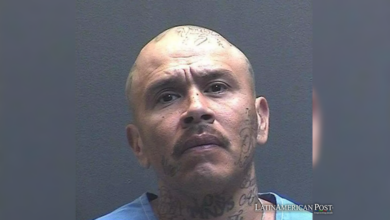Mexican Narco Ballads: Visa Revocation, Monsters and the Glorification Debate

U.S. authorities canceled visas for a Mexican band. This action restarted discussions regarding free speech and a culture’s draw to famous criminals because the band honored a well-known cartel boss during a performance. Besides that, the event reveals more significant issues. There are queries concerning “public sensibilities, censorship, along with double standards”—tough ones to ponder.
Free Speech or Moral Stance?
On its face, the U.S. State Department’s decision to cancel visas for Los Alegres del Barranco seems a straightforward moral condemnation: the band openly glorified a violent drug kingpin known as “El Mencho,” leader of the Jalisco New Generation Cartel (CJNG). American authorities, led by Deputy Secretary of State Christopher Landau, claim artists who praise lawbreakers must face limits to enter American venues. CJNG constitutes a considerable worldwide worry. It was labeled a “foreign terrorist organization” by the Trump government. Because of this rejection of “access to a group that assists such people appears sensible. – It may limit possible damage.
Such actions create problematic questions concerning punishing artists because of their work – a potential step toward censorship. Free speech remains a core component of American law and societal values. Over centuries, the First Amendment has served as a bedrock principle, allowing controversial musicians—from rebellious rock icons to anti-establishment rappers—to critique and romanticize nearly anything, even violence or illegal acts. By revoking visas in response to a song, the State Department effectively wields gatekeeping power against speech from non-citizens. Some critics wonder if the government conflates criminal collaboration with mere artistic expression. Even though narcocorridos or “narco ballads” “indeed romanticize criminals, they are part of a tradition in Mexico and beyond—blending daily realities of violence with cultural storytelling.
This face-off shows a current problem: the place where morality says “no” and banning starts. Even though they are not American, these musicians did things that, while harmful to many, show life or feelings in some groups. If artists only present things okay for America, does that block a better talk about awful cartel acts and what they do? However, history shows that American entertainment has always made and shared violent shows, from mob films to complex dramas. By punishing Los Alegres del Barranco, America chooses a moral side on foreign work – this could hide America’s past with art choice.
A Culture of Glorifying Criminals—From Escobar to Che
This visa affair also highlights a broader phenomenon: Am Americans’ longstanding fascination with criminals and outlaws, foreign or domestic. Throughout modern history, the U.S. has shown no shortage of cultural products celebrating, or at least sensationalizing, criminals. Consider the classic gangster films of the 1930s or the wave of mafia dramas in the late 20th century. Even more pointedly, Americans often romanticize specific Latin American figures, conflating rebellious mystique with moral righteousness.
Consider Pablo Escobar, as an example. During the 1980s, the man controlled a large cocaine business that made him one of history’s wealthiest criminals. But this wealth came not only from drugs but also from violence. Escobar began a time of fear across Colombia. Car bombs hit streets, judges and politicians died, plus neighborhoods lived under intense fright. The damage that the Medellín Cartel persists, although Escobar became a symbol. Escobar marks many items, even costumes. These sell in America, not Bogotá. Some consider this stylish – however, others find it troubling – a murderer turned into a comic.
Note Che Guevara. Over America, one can find him on posters – a picture halted, for many Che embodies rebellion, anti-capitalism, and youth against Cuba’s oppression. Uncover the myths – a complex narrative emerges. As a key leader in Cuba’s revolution, Guevara did more work than fight. He aided the start of firing squads and oversaw executions. He okayed trials as well, and he ended the disagreement. To victims under the regime, Che is not a sign of hope – instead, he is a memory of old fear.
These paradoxes raise complex queries. Why do some brutal figures get sold as symbols, though others meet rejection? And what does it say about us when we turn real suffering into wearable rebellion? Some historians estimate that the early revolution’s years saw hundreds of such casualties, and Che presided over at least some of these processes. Yet his stylized face, borrowed from an iconic photograph, remains a commercial staple, ironically sold in capitalist societies that do not grapple with the moral contradictions of celebrating a man tied to violence.
These examples emphasize a pattern in America. It involves honoring people who are linked to government crimes. It separates an image from the actual death it caused. Because of this habit, one ponders a possible conflict. Will Washington’s harsh response to music promoting “El Mencho” oppose the familiar welcome—or essential acceptance—of pop tributes to Escobar or Che? Though situations are separate, a core idea is constant: celebrating or selling individuals who did severe damage.
A Historical Thread of Censorship Versus Tolerance
Looking at past cultural expressions, the strain between moral dislike and free expression recurs. In the 1950s, American figures judged rock and roll music harshly because they worried it hurt accepted ways of life. By the 1980s, rap writing faced government meetings—politicians felt extreme anger over open words. The 1990s included talks about gangster rap and the praise of force. Yet generally, these controversies ended with courts and public sentiment reaffirming that creative expression, even if unsavory or explicit, deserved protection.
The new twist is the cross-border dimension. Los Alegres del Barranco are foreigners singing about a transnational criminal, thus lacking the constitutional protections of a U.S. citizen. The government can lawfully deny them entry, an action that sidesteps domestic free speech jurisprudence. Still, from an ethical vantage, the question remains: is the CJNG’s praising a criminal act requiring the exclusion of a performer from American soil? The CJNG’s atrocities are undisputed—El Mencho’s cartel is linked to thousands of murders, forced disappearances, and kidnappings across Mexico. Scenes discovered in cartel territories speak of unimaginable cruelty, such as ranches used as forced training sites or extermination camps. Those crimes weigh heavily.
Yet the consistent American glorification of equally violent or oppressive figures invites charges of hypocrisy. Suppose the U.S. indeed objects to “welcoming” those who celebrate criminals and terrorists. In that case, critics ask whether it should similarly bar foreign artists who reference other war criminals or repressive leaders in a positive light. Or ban Che Guevara T-shirts or the Pablo Escobar series merchandise from U.S. commerce? In past times, the government rarely used this type of control. It relied on market forces or societal disapproval rather than formal bans – it isn’t a problematic approach.
Balancing Speech, Memory, and Consequence
In the future, the actual difficulty will not be about laws. How can anyone separate honest art from open praise of brutality? The narcocorrido did not appear instantly. It grew from the long, weathered roots of the corrido tradition—songs that once told of revolutionaries, folk heroes, and the trials of everyday life in dusty pueblos and border towns. But as the drug war exploded into a brutal new chapter, so did the lyrics. Ballads about courage and struggle slowly gave way to anthems soaked in blood and brashness, celebrating the rise of cartel bosses like modern-day kings.
For many performers, especially those grinding it out in their early years, singing at narco-funded parties is a risky rite of passage—one that often pays better than a record deal and offers a fast track to recognition. An effort for existence can turn into a moral risk later. Once artists arrive in the spotlight, past private shows reappear. These events spark concerns: Did they work, or did they agree?
For commentators, there is no middle ground. Offering space to these groups resembles highlighting crime. Stop visas and close doors—do not allow songs stained with blood to resound in concert halls, they assert. It is about pure morals—a statement that art should not act as an exit for famous murderers or their criminal apparatus. In that light, keeping these acts off U.S. stages becomes more than policy—it’s a stand.
But others see a more complicated picture. They warn against flattening a cultural phenomenon into something black and white. Banning narcocorrido artists might score political points, but it also risks silencing voices that—whether or not—are telling the story of a very real, very dark world. To them, these songs aren’t just entertainment; they’re reportage. These songs embody the spirit of areas full of worry plus conflict but often serve as the sole account of actual events where places become too unsafe for reporters or video equipment.
But what resolves this? A clear resolution may not exist. Inside this clash between creativity and morals, amid continued existence, the direction changes – it keeps moving. Every time it does, we’re forced to ask not just what we’re willing to hear—but what we’re eager to silence. They note that many American pop culture products similarly glamorize criminals, from gangster films to TV shows about mobsters or outlaws. The concern is that punishing foreign acts alone smacks selective enforcement and double moral standards.
At its core, the question is one of boundaries. Where do we collectively decide that praise for a monstrous figure is too abhorrent for toleration? Do we apply that standard globally or to foreigners lacking legal recourse in the U.S.? Should consistent condemnation also extend to the numerous U.S. businesses that sell or celebrate merchandise linked to historical figures with controversial pasts? If we are serious about preventing glorification, supporters of this cause might need to examine their cultural acceptance of Escobar-themed T-shirts or the ever-present silhouette of Che Guevara.
Also Read: Trump’s Tariff Earthquake Rattles Latin America’s Trade Balance
The State Department moved against Los Alegres del Barranco. This action shows the discord between moral outrage and open cultural speech. El Mencho’s cartel is cruel. It creates fear among civilians in broad sections of Mexico – moreover, cartel violence is pervasive. But the wider American culture, which frequently romanticizes violent anti-heroes, is hardly immune from double standards. As the debate persists, we are left with fundamental questions about how society should respond to music that praises criminals—mainly when those criminals hail from foreign lands. The answers remain messy, reflecting deep divides in how we weigh moral retribution, freedom of expression, and cultural curiosity.





